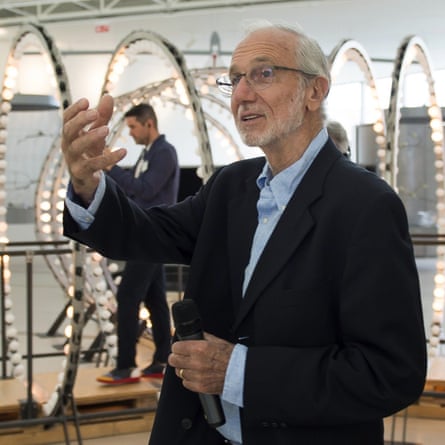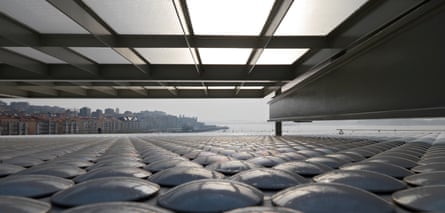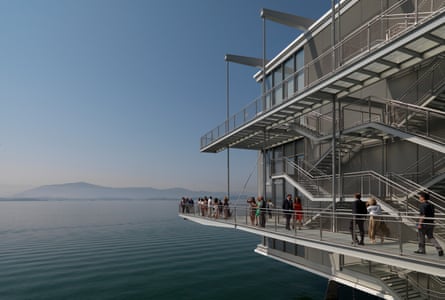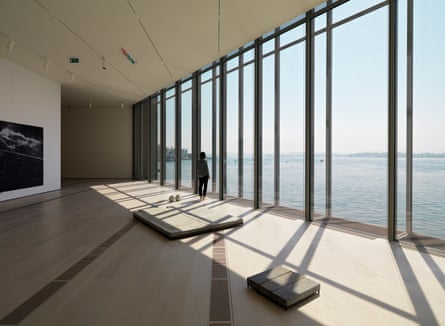Two great hull-like forms stand on the seafront in Santander, northern Spain, clad in thousands of pearlescent discs, like a pair of ships encrusted with exotic barnacles.
Jacked up 6 metres (20ft) into the air on slender white pillars, allowing views through to the water, this is the new Centro Botín, an €80m (£70m) art gallery by Renzo Piano, which opened to the public on Friday.

“From the very beginning, I wanted the building to fly,” says the 79-year-old Italian architect, who has built 25 museums and galleries around the world. The levitation trick here was in part a response to local outcries that this big ark of art would block the view of the sea. In reality, it has done anything but.
Instead, the roaring coastal road, which had long severed the city from the water, has been buried, allowing the neighbouring Pereda Gardens to double in size, spreading over the sunken road to meet Piano’s shiny vessel and allow easy access to the waterfront for the first time.
The building is formed of two lobes, prised apart in the middle, where staircases and gantries zigzag to a roof terrace, designed with a nautical air familiar to much of Piano’s work.
One half houses 2,500 sq m of gallery space over two levels (compared with about 11,000 sq m in 19 galleries at Frank Gehry’s Guggenheim Bilbao, with vast picture windows looking out to sea, giving the feeling of being on a ship’s bridge. The other side contains workshops and a 300-seat auditorium for concerts, festivals and classes in music, dance and cookery, in keeping with the centre’s aim for art with a social mission.
The gallery opens with an exhibition of Goya’s drawings and a crowd-pleasing show of interactive installations by Carsten Höller, while a third exhibition draws together works from the Botín collection, amassed over the past two decades, including by Mona Hatoum and Tacita Dean. An exhibition of African artist Julie Mehretu’s drawings and paintings will open in October.

The project has been privately funded by the Bótin Foundation, a charitable organisation established in 1964 by the aristocratic Bótin family, owners of Santander bank – whose name appropriately means “booty”. Former bank chair Emilio Bótin, who commissioned the building, died in 2014, the year his sparkling coffers of art were originally intended to open.
“The idea was not to create an icon like Bilbao,” says Vicente Todolí, president of foundation’s visual arts committee and former director of Tate Modern. “The building is not trying to show off or give the impression that Santander is more than it is.”

With a population of 170,000, the culturally conservative Santander is about half the size of nearby Bilbao, and Piano has created a suitably modest addition to the waterfront.
His pearly containers join a pleasingly jumbled promenade that includes the postmodern fortress of the Cantabria Festival Palace, designed by Sáenz de Oiza in 1985, and some great beaches, adding another reason to visit this charming port city – and providing a low-key foil to Gehry’s thrashing metallic fish.

